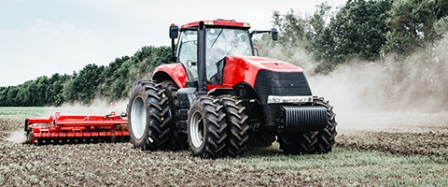What is tillage?
Tillage is the process of loosening and aerating soil, usually in preparation for planting seeds, seedlings or cuttings. Tilling the soil before planting gives the plant the best conditions in which to thrive.
Tillage improves the condition and quality of the soil by breaking up soil crust and increasing porosity, making it easier for water to infiltrate the soil. Plus, it increases the soil temperature, which encourages growth.
Tilling soil also helps with the maintenance of crop beds. It keeps weeds at bay by disrupting seeds — burying them too deep or exposing them to pesticides on the surface. And it can be used to mitigate erosion through a practice known as contour ploughing, in which water channels are used strategically to control run-off and prevent soil from washing away.





